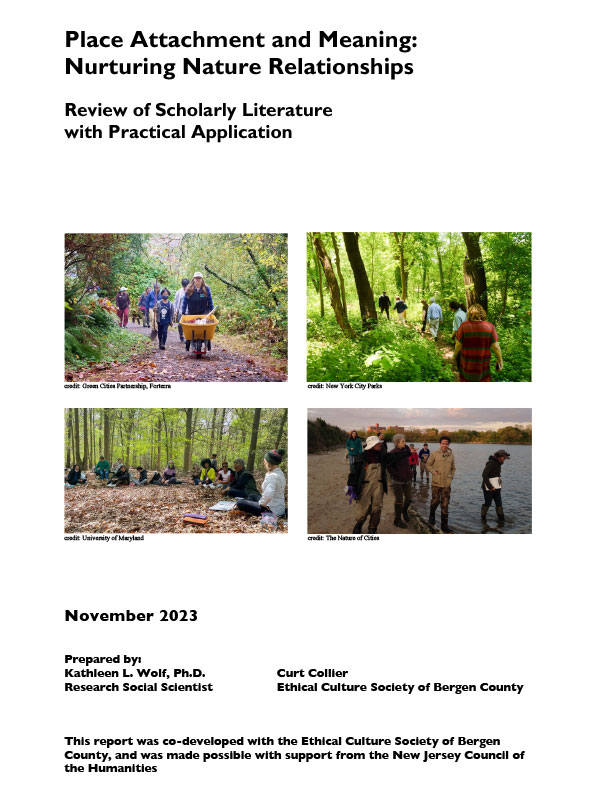Report
Place Attachment and Meaning: Nurturing Nature Relationships
Publication Date:
Place attachment and meaning are important, though rarely acknowledged, contributors to personal mental health and community cohesion. Restoration ecology is generally intentional programming and field activity to restore land to a desired state of ecological function, habitat, and ecosystem services sourcing. Restoration ecology efforts are typically informed by technical aspects of environmental remediation, soils, landscape horticulture and ecosystem succession. Such projects are increasingly being implemented in urban settings.
A separate research and technical application realm highlights the importance of greenspace, parks, and urban forests access to promote and support human health. Extensive evidence indicates that green space encounters can improve mental health, are linked to physical health response, and can support community-level social cohesion. Urban planners and leaders are increasingly interested in enhancing the amount and quality of greenspace in communities, particularly in underserved communities that, due to historic legacies that have limited green space quantity and quality.
The fields and practices of ecological restoration and nature and health rarely intersect. Place attachment is but one human dimension of how restoration sites can also become restorative environments. This essay first provides explanation of the notions of place attachment and meaning, and their importance regarding human health. The next major section will then address what is known about how place attachment develops and becomes a part of one’s identity, and why this is important. A final section will then turn to practical recommendations for how ecological restoration projects can be planned, installed, and managed in ways that can offer opportunities to nurture place attachment.
